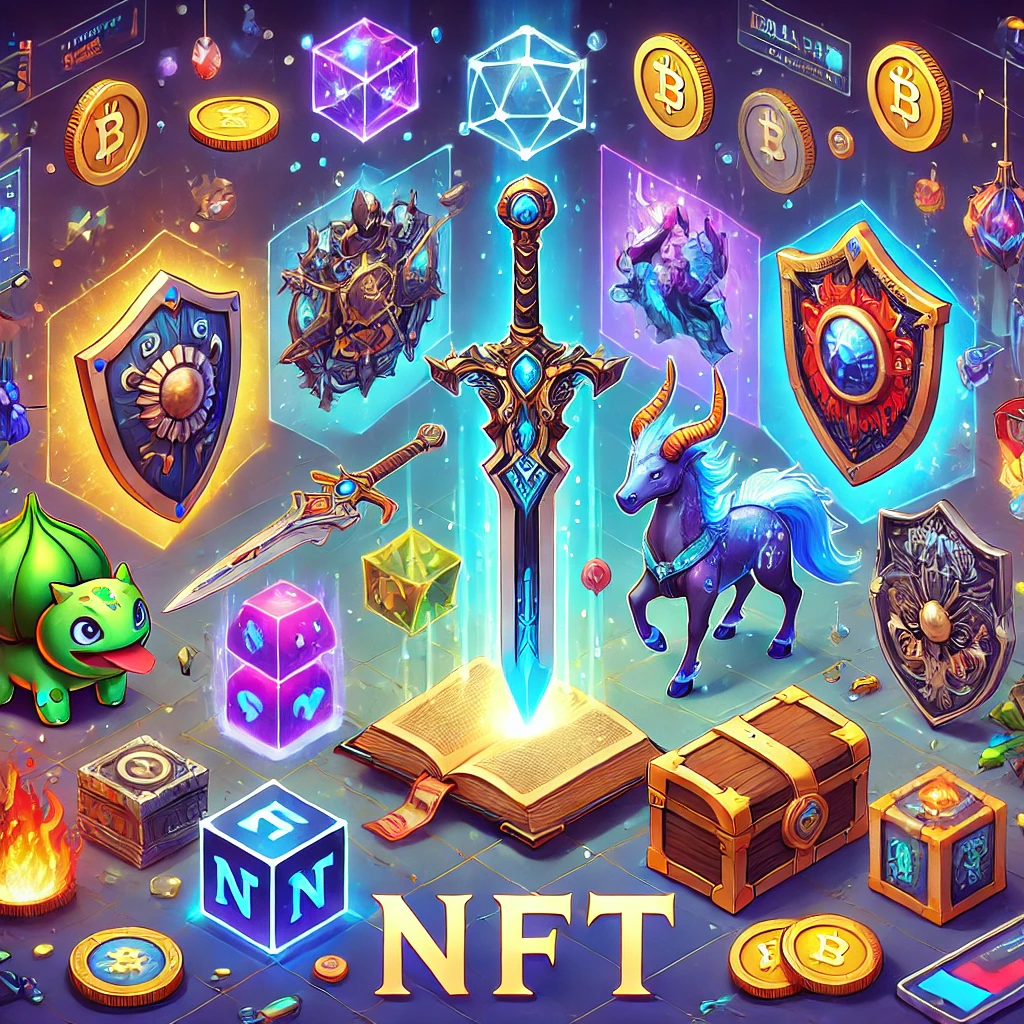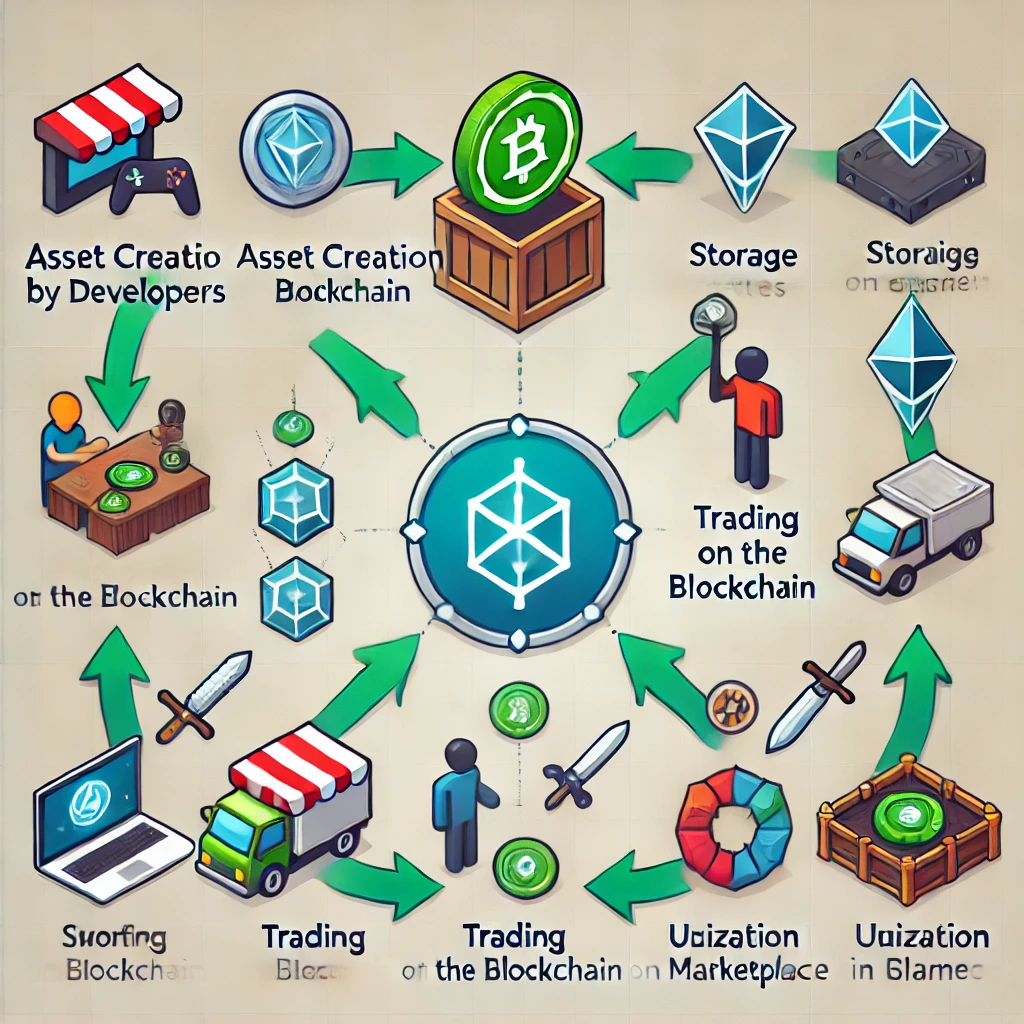Blockchain technology is stirring up a lot of buzz in the gaming world, and for good reason. It’s not just a fad—it’s changing the way we think about digital ownership, in-game economies, and even what it means to “play to earn.” If you’re curious about how blockchain is transforming gaming, let’s dive in and take a closer look at NFTs, play-to-earn mechanics, and the future of digital ownership in games.
What’s the Big Deal with Blockchain and Gaming?
Traditionally, when you buy an item in a game—a new skin, a weapon, or a pet—you’re only buying the right to use it within that game. You don’t really own it. It’s like paying rent for something you’ll never get to keep. But with blockchain, all of that changes.
Blockchain introduces the concept of true digital ownership. When you buy an item on the blockchain, it’s yours. You can sell it, trade it, or even transfer it to other games (if they support it). This is where NFTs (Non-Fungible Tokens) come in.
NFTs in Gaming: What Are They, and Why Do They Matter?
NFTs are digital tokens that represent ownership of a unique item or asset. In gaming, NFTs can represent characters, items, skins, or even entire game worlds. Here’s why they’re a game-changer:
- Scarcity: NFTs can be limited in quantity, which makes certain in-game items genuinely rare and valuable. Imagine owning a legendary sword that only exists in 100 copies across the whole game.
- Interoperability: Because NFTs are on the blockchain, you could, in theory, use them across different games. Picture a pet you buy in one game that you can bring along on your adventures in another.
- Value Retention: With NFTs, the money you spend in a game isn’t lost forever. If you buy an item and later decide you don’t need it, you can sell it. This also creates a resale market for players.

Play-to-Earn: Gaming as a Source of Income
Play-to-earn (P2E) games are exactly what they sound like—games where you can earn real money or crypto just by playing. Unlike traditional games where you buy items, P2E games let you earn assets through gameplay that you can later sell or trade.
Example: Axie Infinity
In games like Axie Infinity, players breed and battle creatures (called Axies) to earn tokens that can be exchanged for real money.
Benefits of Play-to-Earn
- Monetizing Time and Skill: Gamers are finally able to earn from the time and effort they put into games.
- Community-Driven Economies: P2E games often have strong, loyal communities that drive in-game economies and even governance.
It’s no wonder the model is so popular, especially in countries where earning through gaming can provide substantial income.
The Future of Digital Ownership in Games
Blockchain isn’t just about NFTs and P2E—it’s changing the way games are developed and played. Here’s a peek at what’s on the horizon:
- Player-Created Content: Imagine a game where players create items, quests, or even entire worlds that other players can buy, use, or explore. Blockchain can support ownership and attribution for player-created content, giving creators a share in the game’s economy.
- Community Governance: Some blockchain games allow players to have a say in how the game is developed. Through decentralized governance, players can vote on updates, new content, and economic changes, creating a more democratic gaming experience.
- Permanent Game Assets: Blockchain allows game assets to persist even if the game itself shuts down. This means that items or achievements you earned can still be accessed or traded, potentially even used in other games.

The Challenges Ahead
Of course, blockchain gaming isn’t without its challenges. Here are a few hurdles the industry is facing:
- Environmental Concerns: Some blockchain networks consume a lot of energy. Luckily, more eco-friendly alternatives, like Proof-of-Stake blockchains, are emerging.
- High Entry Costs: Some P2E games require a substantial investment to get started. For example, buying enough Axies to play Axie Infinity can be costly, though scholarships and lending systems are helping to lower the barrier.
- Legal and Regulatory Issues: Blockchain gaming involves real money, which means it’s subject to laws around gambling, securities, and taxes. Regulation will be key to the industry’s growth and mainstream acceptance.
Wrapping Up: Why Blockchain and Gaming Make Sense Together
The idea of “owning” your in-game items or earning money from gaming isn’t just exciting—it’s revolutionary. Blockchain gives players more control, more ownership, and more ways to benefit from the time they invest in games. Whether you’re a player, a developer, or just a fan of technology, there’s no denying that blockchain is opening up new possibilities in the gaming world.
So, next time you’re slaying monsters or collecting loot, remember that we might be on the verge of a new era. One where your digital assets truly belong to you…and maybe even hold real-world value.